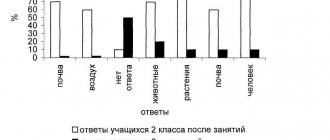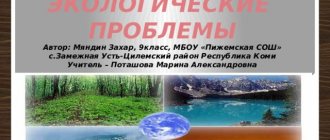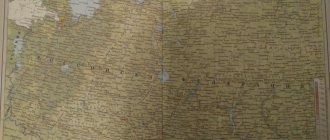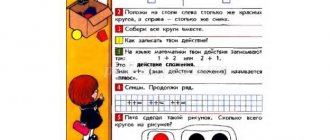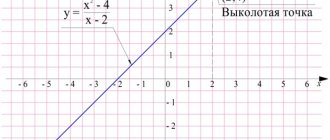What is ecology
The word “ecology” translated from Greek means “the science of the home.” Ecology is a science that studies the relationships between humans, flora and fauna, as well as the impact of human activities on the environment.
In ancient times, our ancestors were completely dependent on the mercy of nature. A prolonged drought or forest fire meant famine and even death. Therefore, ancient people deified nature and did not dare to cause any damage to it.
However, time moved inexorably forward, and man, feeling himself to be the crown of nature, decided to conquer it. He began to build cars, factories, factories, and explored space and the depths of the World Ocean.
Rice. 1. Industrial enterprises.
But such vigorous activity led to serious changes in nature:
TOP 4 articles that are read along with this
- 1. International Red Book
- 2. When and where
- 3. Power circuits
- 4. What is Benelux (the world around us)
- pollution of the waters of the World Ocean;
- air pollution;
- deforestation;
- extinction of many species of animal plants.
Test on the topic “environmental protection”.
Pollution and environmental protection. Grade 11.
1. Undesirable changes in the properties of the environment as a result of anthropogenic input of various substances and compounds
A) environmental pollution B) environmental restoration
C) destruction of the environment D) exhaustion of environmental properties
2. Environmental pollution suppresses the ability to…. its properties
A) self-development B) self-purification
C) self-destruction D) self-healing
3. Returning to nature that huge mass of waste that is generated in the process of production and consumption of human society is...
A) source of environmental change
B) the main source of environmental destruction
B) the main source of environmental pollution
D) a minor source of environmental pollution
4. Environmental pollution happens
A) production and non-production B) quantitative and qualitative
C) industrial and household D) chemical and physical
5. Returning to the environment those substances and compounds that occur in nature in their natural state, but in much smaller quantities, is...
A) physical pollution of the environment
B) qualitative environmental pollution
B) quantitative environmental pollution
D) industrial environmental pollution
6. The entry into the environment of substances and compounds unknown to nature, created primarily by the organic synthesis industry, is...
A) industrial environmental pollution
B) qualitative environmental pollution
B) chemical pollution of the environment
D) physical pollution of the environment
7. Complete destruction of the soil cover occurs primarily as a result of...
A) open-pit mining B) anthropogenic impact
C) closed mining D) human economic activity
8. As a result of the discharge of industrial, agricultural and domestic wastewater into rivers, lakes and seas, pollution occurs...
A) atmosphere B) cryosphere
C) lithosphere D) hydrosphere
9. What kind of pollution poses a particular threat to the ocean?
A) mineral B) petroleum
C) industrial D) household waste
10. Which ocean is most polluted with oil?
A) Arctic B) Quiet
C) Atlantic D) Indian
11. Carbon monoxide (CO) and sulfur dioxide (SO2) are major pollutants
A) lithosphere B) atmosphere
C) troposphere D) hydrosphere
12. The main source of acid rain
A) carbon monoxide B) nitric oxide
C) sulfur oxide D) sulfur dioxide
13. What gas emissions threaten humanity with the greenhouse effect and global warming?
A) carbon B) hydrogen sulfide
C) nitrogen D) chlorine 14. Metallurgical, chemical, pulp and paper industries are what industries?
A) dirty B) energy-intensive C) clean
15. An independent public international organization founded to prevent environmental degradation
A) UN B) Greenpeace C) UNICHEL D) NATO
16. In what year was Greenpeace founded?
A) 1980 B) 2000 C) 1971 D) 1961
17. Where the first UN conference on environmental issues took place
A) Oslo B) London C) Washington D) Stockholm
18. In what year did the second conference on environment and development take place in Rio de Janeiro?
A) 1982 B) 1992 C) 1995 D) 1997
Answers: 1 A, 2 D, 3 B, 4 B, 5 B, 6 B, 7 A, 8 D, 9 B, 10 B, 11 B, 12 G, 13 A, 14 A, 15 B, 16 V, 17 G, 18 B
Ocean pollution
The ocean is becoming more and more like a cesspool where people throw out huge amounts of various industrial wastes, oil and petroleum products, solid waste, and toxic substances. Radioactive waste poses a particular danger.
As a result of pollution of ocean waters, local flora and fauna suffer:
- fry and seabirds die from oil spills and gas exchange is disrupted;
- plastic film leads to the death of whales;
- Toxic substances, accumulating in the body of fish, marine animals and birds, lead to the development of diseases in humans.
Rice. 2. Oil slick in the ocean.
The main cause of pollution of the World Ocean is industrial enterprises on land. To reduce the amount of emissions, it is necessary to install powerful treatment facilities and introduce closed-loop production, in which all waste is processed and not thrown away.
To clean ocean waters from oil products, special vessels have been developed that, like a sponge, suck up oil spills and collect plastic and other solid debris.
Deforestation
Green plants are our faithful friends, absorbing carbon dioxide and releasing valuable oxygen. They are a vital part of the food chain, and cutting them down leads to irreversible consequences:
- decrease in oxygen in the atmosphere;
- deterioration of soil composition, decrease in its fertility;
- disappearance of plants and animals.
Tropical forests are a unique ecosystem that has been compared to the lungs of our planet. They take an active part in gas exchange on the globe. Currently, people have already destroyed more than half of the valuable forests, and continue to mercilessly cut them down.
Rice. 3. Tropical jungle.
If humanity does not realize how destructive its activities are in relation to nature, and does not change its barbaric behavior, then a global environmental catastrophe will soon not be avoided.
Ecological lesson “Garbage is a source of environmental pollution”
Biology lesson in 5th grade “Garbage is a source of environmental pollution”
Author-compiler:
Biology teacher, MBU "School No. 85", g.o. Tolyatti, Samara region. Nikulina Tatyana Dmitrievna
Goal: updating the problem of solid waste disposal and searching for possible solutions. Tasks:
• study the impact of household waste on the environment and human health, their recycling;
• help students understand and understand the importance of recycling;
• teach you to make the right decisions on waste disposal issues and take meaningful actions;
• to form an environmental culture among schoolchildren and resource conservation, to develop interest in the practical application of acquired knowledge;
• instill the skills of an environmentally friendly lifestyle and respect for nature.
Lesson type: combined (40 minutes).
Main content of the topic: solid waste disposal, recycling, waste recycling.
Planned results
Personal: development of cognitive interests in the field of ecology, development of skills to set educational tasks and solve them.
Cognitive: search and identification of significant functional connections and relationships between parts of the whole; the ability to choose grounds and criteria for comparing objects; comparison and contrast, classification of objects according to the proposed criteria.
Information and communication: using various sources of information to solve problems; reflection in oral or written form of the results of their activities.
Regulatory: the ability to find and eliminate the causes of difficulties.
Communication skills: ability to work as a cohesive team.
Reflexive: possession of the skills of joint activities: coordination and coordination of the results of their activities; assessment of one's educational achievements, behavior and emotional state.
Subject: vision and understanding of environmental problems; knowledge of the basic methods of recycling solid household waste, acquisition of environmentally friendly lifestyle skills.
Equipment and organization of the educational space: handouts for children (cards for completing tasks), garbage items, recyclable products.
DURING THE CLASSES
I. Determining the topic of the lesson. Updating the material being studied.
The teacher addresses the students: “Let’s remember, what does ecology study? What environmental problems are you aware of? The guys answer questions and list the environmental problems of our time known to them.
The teacher asks: “What is the most important problem? Which one is most acute? A discussion begins between the students. “Does each of us contribute to environmental pollution?” - asks the teacher .
The teacher suggests solving the riddle: When everyone restores order and comfort,
People give me everything that is not needed at all.
(Bin)
“Does the trash always end up in the bin?”
“The most important environmental problem today is waste disposal.” The students, together with the teacher, formulate the topic of the lesson: “Garbage is a source of environmental pollution.” The teacher explains why this topic is so relevant:
We all remember the fairy tale “The Little Prince,” but only a few of us are able to recognize ourselves in the heroes of this fairy tale, who inhabit tiny planet-worlds. The call of the great citizen of the Universe, Antoine de Saint-Exupéry, to “get up, wash your face and put your planet in order” still rings true today.
As long as life has existed on Earth, humanity has produced waste. Billions of tons of garbage are generated every year.
And today we will discuss this problem.
II. Learning new material.
The teacher invites the children to formulate the purpose of the lesson.
Summarizes all the options: “Today in class we will talk about household waste, its recycling and its impact on the environment and human health. The purpose of our lesson is to update the problem of solid waste disposal and search for possible solutions.”
1. Let’s understand the concept of “waste” and the composition of garbage .
First, let's figure out what garbage is?
GARBAGE =HOUSEHOLD SOLID WASTE (MSW).
Waste - substances (or mixtures of substances) recognized as unsuitable for further use within the framework of existing technologies, or after domestic use of products.
Before the era of urban formation, waste disposal was environmentally friendly: food waste, fabrics made from natural fibers, leather, wood, etc. quickly rotted and were used as fertilizer.
At the moment, there is a whole science about garbage - garbology (from the English garbage “garbage”) (garbage science).
The teacher begins a conversation on the topic: “Where does waste come from?” Students begin to list what they throw in the trash every day.
The garbage may contain things unsuitable for further use: clothing, shoes, furniture, dishes, old books, newspapers, magazines, food waste, apartment renovations, etc. The majority of municipal solid waste consists of food waste and paper.
Students make a cluster in the “Composition of Solid Waste” notebook.
In the center is the name of the topic “Composition of household waste”, from it to the sides are the main types of waste (plastic, paper, glass, metal, food waste).
Each inhabitant of our planet throws out approximately 440 kg of garbage annually. There are more than 6 billion inhabitants on the planet. “Can you imagine how much garbage accumulates on the ground? What huge spaces are occupied by landfills and landfills? We’ll probably have to escape the garbage soon?”
A student discussion is organized on the topic: “Why is there more waste from year to year?”
The teacher summarizes and lists the reasons for the increase in garbage:
• population growth (7.3 billion people)
• urbanization and growth in consumption of goods
• change in the morphological composition of waste (plastic)
• low provision or lack of infrastructure and waste processing capacity
• low level of public awareness (batteries, mercury lamps)
• lack of a systematic approach to waste management.
2. We consider the consequences of environmental pollution by garbage :
“Many people think that the problem of waste disposal is an aesthetic aspect. This is true, it is unpleasant for us to kick cans under our feet and swim among plastic bottles. Guys, what more serious consequences can waste pollution lead to?”
• Soil pollution
• Air pollution
• Pollution of groundwater and ocean waters
• Spread of infectious diseases by rodents and birds
• Depletion of natural resources
• Increase in population morbidity
• Increase in congenital pathologies
• Pollution of habitats of living organisms.
3. We study waste management methods
The teacher asks the children what methods of waste disposal they know, then talks about the main methods of waste management:
Burial (disposal) – storage of waste in a landfill without treatment. It is the cheapest method when large areas are available
Combustion (neutralization) – combustion causes atmospheric pollution.
The resulting ash can be a hazardous waste.
Sorting (recycling) – distribution of waste into recycling categories.
Composting (neutralization) is a method of fermentation under natural or artificially created conditions. Only possible with biological and organic waste.
The guys write down waste management methods in a notebook in the form of a diagram.
The teacher invites students to imagine themselves in the place of the city administration. What is the best waste disposal method for the city, taking into account both the economic and environmental components?
Burial of 1 ton of garbage – 180 rubles
Burning 1 ton of waste – 2000 rubles
Sorting 1 ton of waste – 12,000 rubles
Composting 1 ton of garbage – 4000 rubles
A student discussion is organized: “Which method is the most acceptable?”
Physical education minute:
Game moment: “Each type of garbage has its own container.”
In front of each student is a card with photographs of waste (plastic bottle, newspaper, eggshells, wrapping paper, aluminum can, wallpaper, juice carton, foil, yogurt box, orange peel, plastic bag, potato peel, etc.). There are three containers in the classroom: yellow, green, blue. You need to put the “garbage” into different containers and explain your choice.
• “Green” – food waste
• “Blue” – paper
• “Yellow” – metal and plastic
III. Intellectual and transformative activities.
1. The teacher asks the question: “What can be done to reduce waste?” The “Brainstorming” technique is used Students express their ideas.
The teacher asks us to imagine that we are in the distant future, and the entire area around our houses is littered with garbage. There is so much waste that there is nowhere to take it out. To find a way out of the current situation, the children are asked to complete the task (see appendix).
The answer to the tasks are the letters: P, E, C, I, K, L, I, N, G. From which students form the word - recycling. Recycling is the processing of waste, the return of waste to the “production-consumption” cycle.
2. Auction of ideas: “ Recycling of waste.”
The teacher suggests filling out a cluster: for each type of waste, students are asked to make arrows under which they write down what they can be recycled for (3-5 minutes). The work is done in mini groups.
Listening to student proposals, analyzing and summarizing the answers.
— What can be made from plastic? (jewelry, bag, lamp, flowers)
— What can be produced from used paper? (make paper, notebooks, colored paper for children's creativity);
— What can be made from glass? (new, good glass, glass wool);
— What can be produced from old scrap metal? (cars, machines, crafts and more);
— What can be produced from food waste? (compost, animal feed, biofuel).
3. «Second life of waste"
The teacher asks the question: “Where does our garbage go?”
In Tolyatti there is a waste processing complex - “POVTOR”, group: it was launched in 2009, with a capacity of 1.5 million m3 of waste per year. “Repeat” – Volga region secondary resources. At the plant, many types of waste are given a second life.
The teacher says: “At our waste recycling complex in Tolyatti, plastic bottles and plastic bags are given a second life. First, plastic and polyethylene are sorted, crushed, washed, dried, and granulated. Secondary raw materials are made from the resulting granules.”
The teacher turns to the children: “Do you use recycled products?” Most guys answer in the negative, because few people know what is made from recycled plastic bottles: car upholstery, pillows, wet wipes, backpacks, clothes, toys (filler).
IV. Generalization and consolidation of knowledge.
The teacher asks the question: “Garbage or recycled materials?”
“Remember, if we throw a plastic bottle past a trash can, it will take 500 years to decompose. The first bottle made in 1947. still hasn’t decomposed”
The teacher suggests discussing with the children ways to reduce the amount of household waste.
-Try to buy drinks in glass bottles that can be...
(use many times or return to the store);
-Clothes that you no longer wear... (can be given to those in need);
-Don’t throw away old toys and books…. (someone may need them);
-Find out where there is a waste paper collection point nearby... (and hand over unnecessary paper there);
-Try not to use polystyrene foam... (since it practically does not decompose in nature);
-Take an active part in community cleanups to improve the city.
V. Reflection.
The teacher invites the children to decorate the tree branches. Each student chooses a piece of paper of a certain color, reflecting his activity in the lesson:
— Green – “I am active and confident in class”
— Yellow – “I felt insecure, I didn’t work enough”
- Red - “I have a lot of questions, I have something to work on at home...” With each leaf our tree becomes more and more beautiful.
The more you show interest in this problem and your initiative, the cleaner and more beautiful our nature will become.
Vladimir Soloukhin wrote in his story “The Verdict”: “I am convinced that if you see from your window every morning a beautiful tree, a beautiful street, a beautiful house, a beautiful landscape, even if it’s a city one, you will feel better and live longer.” "
The Earth's tomorrow will be the same as we create it today. Let's take care of our Earth! We will not have another planet! And remember the words... Get up in the morning, wash your face, put yourself in order - and immediately put yourself in order
your planet.
Antoine de Saint-Exupery.
If each of us follows these rules, I think that the world around us will become a little cleaner.
Let us together ensure that there is always order in our school, in our city: clean classrooms and corridors, streets and alleys.
VI. Homework.
§30.
Students choose a task according to their level of knowledge:
Basic level: Analyze your own garbage at home, identify groups of solid waste that can be recycled and which cannot be recycled.
Advanced level: offer your options for solving the problem of sorting and recycling waste at school.
Appendix Assignment for group 1:
Assignment for group 2:
Assignment for group 3:
Assignment for group 4:
